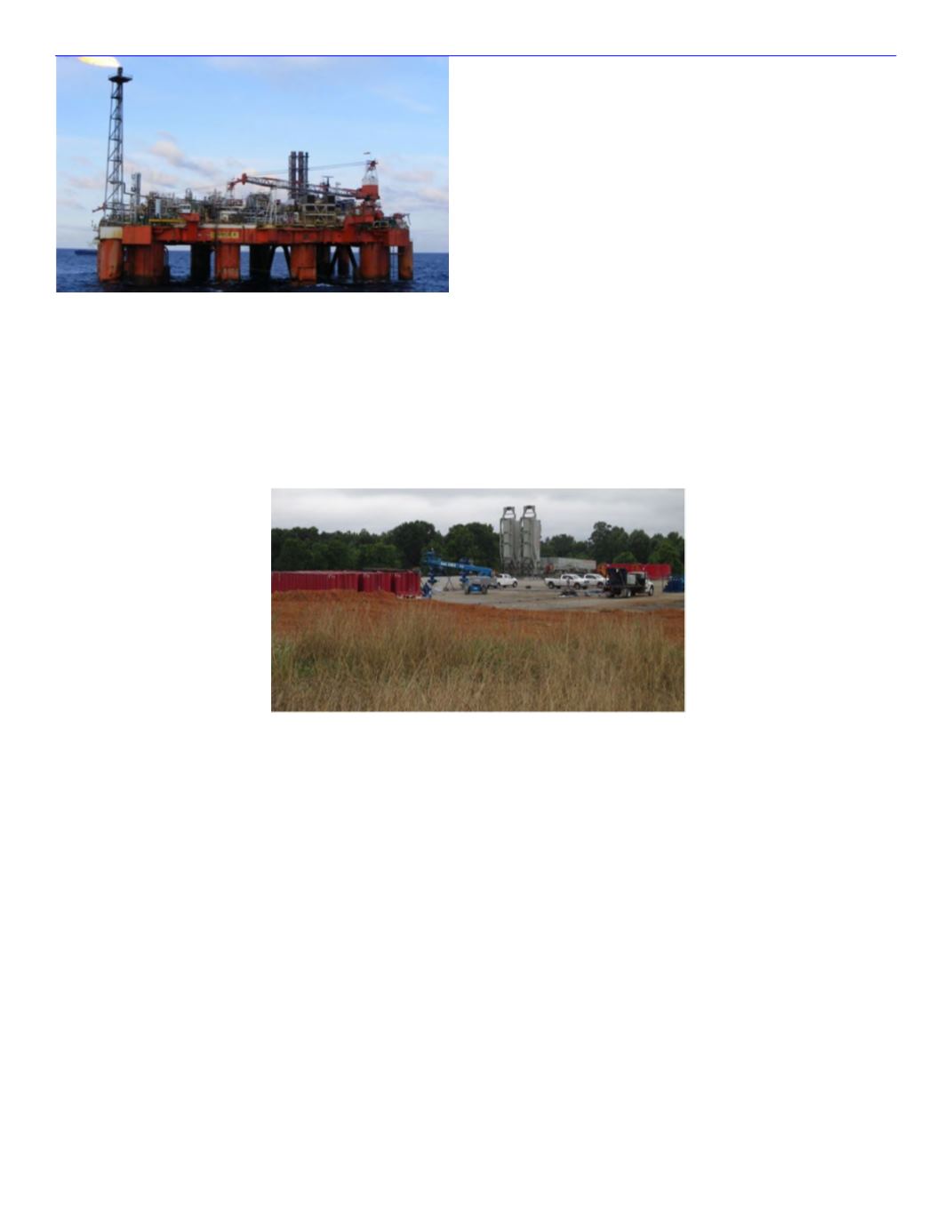
Page 5
Fall 2015
NATURAL RESOURCES PROTECTIVE ASSOCIATION
This has been a
game changer for the
United States.
Although Texas and
Oklahoma were early
sites for oil produc-
tion,
subterranean
slate and shale struc-
tures such as the
Marcellus Formation
exist across the Unit-
ed States.
These
marine sedimentary
rock layers were
formed millions of years ago beneath
prehistoric seas, trapping huge pop-
ulations of algae and plankton which
decayed into petroleum oils. New,
unconventional drilling techniques
facilitated the utilization of these
sources of oil which, up to this point
were impossible or impossibly ex-
pensive to exploit.
Alabama, Tennessee, the entire Ap-
palachians up through and including
Pennsylvania and the southern tier
of New York State became, over-
night, oil country. Sheiks and cow-
boys were displaced by Quakers and
apple farmers. The industry shook.
Previous conventions were turned on
their heads. Although the US had
always produced huge amounts of
oil, the demands of hungry industry,
energy producers and gas-guzzling
automobiles had always outstripped
our production. Hence, the Sheiks
stranglehold on the American econo-
my. Almost overnight, America went
from being an energy importer to
become an exporter. The booming
supply of natural gas has led to the
imminent and sudden death of the
coal industry. When Michael Bloom-
berg became mayor of New York,
the city still had coal-fired furnaces in
one hundred fifty schools. They are
now gone. Many utilities switched
from coal to natural gas to produce
electricity.
President Obama, who ran on an
environmental awareness plank in
his platform has been Frack Fan
Number One from Day One. The
political advantages are easy to see.
As an energy exporter, we bring
cash into our economy. Energy in-
dependence is an obvious political
and strategic asset. Jobs, tax in-
come, increased industrial produc-
tion are all benefits of the new era of
energy.
There is, however, a dark side. As
we have all become increasingly
aware, unconventional drilling has
many hidden and insidious effects.
Wells are drilled into the earth and
rock and the wall is traditionally lined
with a concrete casement.
This cylindrical wall prevents
the loss of extracted oil and
the escape of drilling-related
fluids. They can crack. The
oil industry admits this. They
are, they say, engaged in a
hard, dirty and dangerous
job that provides modern
America with its rich, pleas-
ant, high standard of living.
No process is perfect but the
wells they produce have a
high standard of integrity.
Ninety to ninety-five percent of their
wells maintain their integrity during
the initial phase of their productive
life.
In other words, the oil and gas indus-
try (O&G), assures us that five to ten
percent of the thousands of wells
they drill will leak. Gasland, a docu-
mentary produced by independent
filmmaker and Pennsylvania land-
owner Josh Fox (find it on YouTube),
has the dramatic scene of a home-
owner igniting his tap water with a
Bic lighter. The movie depicts entire
communities whose water supply
has been contaminated by the drill-
ing industry. The problem emanates
from the chemicals introduced into
the wells with the pressurized water.
Benzene, formaldehyde, lubricants
and other endocrine-disrupters are
added to the so-called processed
water. Exclusions from federal law
(the Haliburton Exemption) classifies
(continued next page)
Historically, wells consisted of a ver-
tical shaft drilled down to a reservoir
of crude oil.
Ambient pressure
caused the oil to rise to the surface
(a “gusher”). Once that pressure
abated, pumps were used to contin-
ue the flow of oil to the surface.
Huge pools of oil under Arabian de-
serts continue to allow that simplest,
cheapest method of extrac-
tion there. Once the easiest
bodies of oil were extracted,
many experts believed the
planet would run out of oil by
the 21st century.
Drilling science explored new
ways of bringing the resource
to the surface. Pumping wa-
ter into wells allowed the oil,
which floats on top of the wa-
ter, to rise to the surface.
Methods were developed to
drill horizontally at depth.
New
sources were discovered and were
able to be exploited.
Combining these methods led to to-
day’s boom in oil production and a
change in local and global politics as
well as increasing environmental
concerns.
Hydraulic Fracturing is a technique of
forcing water laced with a cocktail of
various chemicals, lubricants and
solid matter such as sand or tiny ce-
ramic balls into a well. The high
pressure (three thousand pounds per
square inch or more) of the fluids
causes fractures in the bedrock lay-
ers, commonly sandstone or shale.
These cracks are then induced to
remain open by the presence of the
sand or commercially-produced
fracking balls, causing wide areas to
be opened to extraction.


